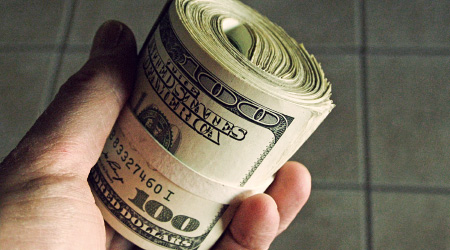How To Manage A Savings Account

For most consumers, their first foray into managing a savings account began when they were children. Parents will often take their child to their local bank or credit union and open a passbook savings account and make a small initial deposit. Kids are then encouraged to take their weekly allowance and put some money into their new savings account and use the rest for whatever they like. Sometimes this lesson takes root and sometimes it doesn't. Real life tends to get in the way when we start work and begin paying bills. This can make it difficult when trying to manage a savings account but there are steps which can be taken to make the process easier.
Make Saving a Habit
Regardless of the underlying goal a person is trying to accomplish, it always makes it easier if it becomes routine. By making saving a habit you force yourself to deposit the same amount on the same day every week or every month. Real life can be one chaotic and hectic scenario after the other and it's easy to say I'll make a savings deposit next time. If you establish a pattern of saving early and often it makes it easier over the long run.
Set Monetary Goals
Many individuals, especially of those with Type A personalities, are highly goal oriented. Establishing a financial target doesn't make saving seem like an endless process that goes on in perpetuity with no tangible benefit. Set an initial goal of $100 and then $500 and then $1,000 so every time you reach a milestone it feels like a goal has been reached providing positive reinforcement. It's important to realize that once goals are met, then other opportunities present themselves which won't be available at lower savings amounts.
Look for Opportunities
Financial opportunities do not mean saving $1,000 and then treating yourself to a $990 shopping spree. These type of opportunities mean taking your savings and effectively applying it to yield greater returns. A saving account is a reward unto itself but will unfortunately make little to no interest. A much better option would be to use the $1,000 and purchase a short-term Certificate of Deposit earning five times the interest of what is offered in a savings account. If you are uncomfortable with purchasing a CD then keep an eye out for higher interest saving accounts offered by competing banks and credit unions. Move your balance if necessary since it's your money.
Increase Your Allotment
This isn't necessarily required but is highly recommended because it leads to faster savings growth. Saving $10 per week or $50 per month is great but once your savings routine is established try increasing the amount you save in small increments. If you save $50 per month for six months try increasing the amount to $75 in the seventh month. Of course, don't use money which is better applied to paying down large high-interest credit card debt or food. However, minimizing or eliminating wasteful spending often frees up additional money which when applied to savings can lead to thousands of extra dollars per year.
Avoid Tapping Savings
As mentioned earlier, real life is often inconvenient and ill-timed. Emergency car repairs or unexpected medical expenses can not only significantly affect monthly spending but may result in using savings to make ends meet. This should be considered up their with taking a loan out on a 401(k) or hocking a family heirloom at a pawn shop. To cover these types of situations, use your savings goals to reach $5,000 then take $2,000 of that and put it in an emergency savings account. It may seem redundant to have two savings accounts but it is important to remember the purpose of each and use them accordingly. Treating a single savings account like cookie jar leads to continual dipping and eventually running out savings.
Elsewhere on StockMonkeys.com







